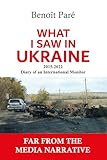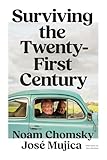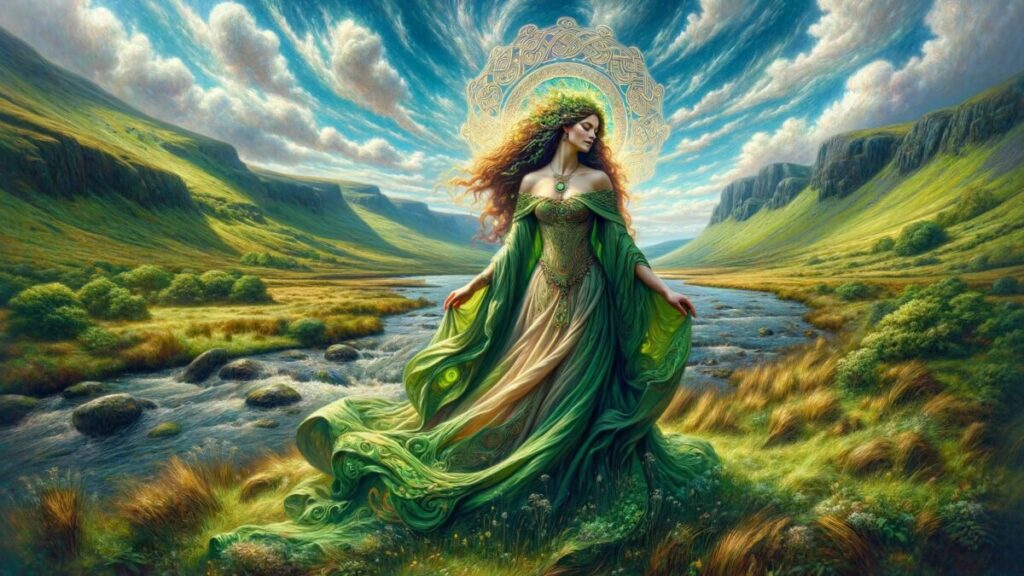A Heart-Felt Story
In the beginning men and women lived in harmony and peace. We were once one with nature and there were few differences between us in social power or wealth. Women had a special place in early tribal societies: their motherhood was revered, they held positions of authority, and they practiced forms of magic centered on the worship of a monotheistic Goddess. Figurines of Goddesses have been discovered, proving there was once a great women’s religion. At the end of the Bronze Age, hunters and pastoralists from Central Asia invaded these peaceful societies creating social hierarchies, wars, and the beginnings of male dominance. All of this was later sanctioned by the worship of otherworldly, transcendent male deities that eventually coalesced to become a monotheistic God. The Goddess was discredited and went underground, being kept alive in later years by peasant communities in the magical practice of witchcraft. Today the Goddess has resurfaced as a focus of women’s spirituality.
These are the claims about history and social evolution made by many Neo-Pagan or spiritual feminists. To be sure, not all people associated with the Goddess movement believe all of these claims. However, the summary above is probably a fair one, in that each of its elements is repeated in the writings of nearly all of the movement’s leaders. How plausible are these contentions in the light of anthropology, archaeology, macrosociology, political science, world history, mythology studies, and comparative religion? Were there once matriarchies or matrifocal societies? Does reverence for goddesses go all the way back to the Paleolithic Era? Can all or most of the figurines found by archaeologist Marija Gimbutas and others be classified as goddesses? If, in our society, a male god goes with male dominance, is it fair to infer that if we find evidence of goddesses in the ancient world this must indicate female dominance or at least the high status of women? Was motherhood revered in ancient societies? Is all magic goddess-centered? Is all witchcraft synonymous with goddess reverence? Were ancient tribal societies peace-loving before being invaded? Does the movement from polytheism to monotheism involve a battle among male gods, or between male and female gods? Here is a summary of the Goddess movement’s claims.
Common Claims or Assumptions Made by the Goddess Movement
- There were once matriarchies or matrifocal societies
- All or most of the figurines discovered by archeologists are goddesses
- Goddess reverence goes all the way back to the Paleolithic Age
- All magic is synonymous with goddess reverence
- All witchcraft is synonymous with goddess reverence
- Ancient People revered a monotheistic goddess
- Motherhood is the leading function of goddesses
- There is a direct connection between the presences of goddesses in ancient societies and the prosperous material status of women
- The rise of institutionalized male dominance was caused by invasions of pastoral nomads
- Tribal societies were peace-loving before being invaded by patriarchal societies
- The movement from polytheism to monotheism involved battles between male gods and female goddesses
In addition to addressing these contentions about history, it is important to make explicit the underlying values of the Goddess movement. I agree with Philip Davis (1998) that the Goddess movement is part of a larger Romantic movement that began during the Renaissance and sustained itself through the Enlightenment, the Industrial Revolution, and the twentieth century. I will paint as sympathetic picture as I can of the Romantic movement’s perspective on the world.
The Goddess movement is generally critical of Western-style political centralization and the globalization of the human community because Western civilization is not now and never has been truly democratic. The movement’s members tend to believe that all state societies, even those predating capitalism, serve the interests of the wealthy. They do not believe that real democracy can ever work when power is centralized. Furthermore, they resist attempts to universalize different groups of people into a universal humanity because this grouping in the past has, in practice, excluded many groups from the wealth they produced because of their class, race, or gender. At the same time, the movement is generally critical of the competitive values of capitalism and is suspicious of the preoccupation with material wealth, the accumulation of commodities, and high technology. Finally, the Goddess movement is critical of science as a way of knowing because, while proclaiming to be neutral, it actually serves the interests of the elite classes by providing the methodological base by which technologies of war may be built. For these reasons, the movement looks to the political organization of pre-state societies as a model for participatory democracy, pre-capitalists ways of conducting economic relations, and pre-scientific ways of knowing how the world works.
Because the Goddess movement often contrasts the values of tribal societies with those of state societies, it must also challenge the way world history has been presented. According to the Goddess movement, the dominant social order has placed a value judgment on social evolution by claiming that it constitutes “progress”. This means that the more complex societies are, the more they have improved life for everyone. Because the movement challenges this assumption, it must either try to revise history as written or, in more extreme cases, claim that the struggle to discover an objective history is futile. Here the Goddess movement joins forces with the extreme relativism of the Postmodernists, who say that one version of history is as good as another, and that competing ways of knowing about the past are equally relevant. One common approach is to fuse the study of history with mythology. Much of the work of the Goddess movement vacillates between the attempt to revise views of what really happened in history, and the effort to reinterpret history based on ancient mythology. For obvious reasons, this latter strategy garners little sympathy from those historians that aspire to using a scientific methodology.
The system of industrial capitalism has impacts not just on the economy and political structure of societies, but also on their sacred traditions, their ideas about non-human nature, and the collective psyche or mentality of the people. The Goddess movement believes that there is a direct connection between the nature of the perceived sacred sources and the manner in which people treat the natural world. The movement’s members believe that an otherworldly, transcendental God, because he is out of the world, neglects this world and effectively colludes with elites who exploit and pillage the natural world. Conversely, when sacred sources are understood as immanent and worldly, nature is more likely to be treated with respect. According to spiritual feminists, the distant sky-god acts as if he were an absentee landlord. If Goddess advocates are skeptical about centralization and globalization in the political world, they will take the same attitude toward the spiritual world. Rather than believing in a universal monotheistic deity, many people in the Goddess movement prefer a decentralized polytheism, though this is a bone of contention within the movement, as we shall see.
Patriarchal religions and atheistic non-believers have tended to use mechanistic metaphors to describe nature. The Goddess movement rejects the idea of nature-as-machine and believes that nature is alive, that the world is an organism. Even in patriarchal religions nature is often conceived of metaphorically as “mother”. The Goddess movement builds on this theme, viewing human beings and the rest of the animal kingdom as part of “her” body. Just as nature is not separate from sacred sources, so humanity is not separated from other creatures. Other animals are at least the equals of humans and we humans have no business trying to get away from nature or to improve her with scientific techniques. We need to merge with, or get back to, nature. There are also implications for our sense of time. One symptom of humanity’s problems, according to Goddess advocates, is our linear concept of time. This has caused us great problems in understanding how change occurs. Nature, for the Goddess movement, works in cycles. For humanity to merge with nature we would need to understand society and our individual lives as following the cycles of nature. Because the relationship between humanity and the rest of nature must be immanent, people do not need mediators and specialists to interpret sacred experience. We are all explorers together with no need for chaperones.
There are two kinds of nature—external and internal. Our bodies are an internal, microcosmic slice of the external macrocosm of nature. This has deep psychological implications. For the Goddess movement, rationality, analysis, planning, and striving to be objective are the psychological skills an individual uses to dualize or separate our bodies from the rest of nature. These rational skills lead to other dualisms: God vs. nature, nature vs. society, society vs. the individual, and the mind vs. the body. These separations are partly responsible for the problems of the modern world.
It is the non-rational part of the psyche—the part of the mind that synthesizes rather than divides—that is the true source of wisdom. The emotions, sensuality, intuition, and spontaneity are understood as virtuous. The Goddess movement believes that women have these skills more than men do and, generally speaking, though they would probably not claim this explicitly, most members act and talk as though women are inherently better than men.
There are at least two tension points which are worth pointing out. While the Goddess movement opposes traditional female roles and supports experimenting with being simply more human, there is a tension between those who want to develop the skills that men have traditionally been encouraged to claim, and those who want to elevate traditional female skills as inherently superior to male skills.
There is also a tension between the value of innocence in contrast to the value of experience. For the most part, the Goddess movement values experience over innocence but, in their contrast between tribal and state societies, they tend to romanticize tribal societies as innocent and uncorrupted. In the first chapter, I criticized the theory of progress as a way to understand history. Taken in its extreme, New-Age form, the Goddess view of history is a degeneration theory of social evolution. Instead of suggesting, as progress theorists do, that the further we go in history the better it gets, this theory argues that the earlier in time we go the better it gets. A summary chart of these Romantic values follows:
List of Twenty One Composite Values of Ancient Goddess Supporters
SOCIAL STRUCTURES
- Simple, pre-state societies are an ideal to strive for (small is beautiful).
- Complex, large societies are inherently bad, because they are impersonal.
- Innocence is more noble than experience when it comes to social evolution.
- What comes earlier in time must be better. Tribal societies are the ideal.
- Material wealth, objects/commodities and technology are likely to be corrupting influences.
- Science is alienating, cold, unfeeling and doesn’t address what is important in life.
- Cooperation and communalism are better than competition as a way to organize social life.
- Modern society perpetrates a false unity of humanity, ignoring gender, ethnic and class inequalities.
- Myth is at least as important as history.
- Historians reduce myth to illusionary or naive history. Support of a real “people’s history,” while retaining the value of mythic stories as a valuable sacred activity.
NATURE/SACRED
- Spirit is immanent in nature and the individual rather than transcendent and separate from nature. Nature is all there is. Behind nature there is only more undiscovered nature.
- There are many goddesses and gods – polytheism – there is no single source which “unites them all.*
- Nature is understood as an organism, rather than a machine.
- Goddesses are inseparable from female physiology: menstruation and childbirth.
- Neither organized religion nor atheism provide meaningful answers to the big questions of life.
- Other animals are at least the equal of or superior to human beings.
- Human beings should merge with nature. We have no business thinking or trying to improve her.
- Generally, sacred communion is experiential and not mediated by secular or sacred authorities based on faith.
- Change happens in cycles, rather than linearly.
PSYCHOLOGY
- Emotions, sensuality, intuition and the non-rational are at least as good as reason or empiricism as ways of knowing.
- What is subjective and personal is better than impartiality and striving to be objective.
- Spontaneity is more in touch with what matters in life than planning.
- Experimental gender roles are better than traditional male and female roles.
- When it comes down to it, women are inherently better than men.
* There is a counter-argument which claims that there is a single goddess.
According to Goodison and Morris (1998), the controversy between the supporters of Goddess theory and those who dismiss it is made worse because the two sides do not speak to each other. Those who support the theory are non-specialists, artists, psychotherapists, Neo-pagans, and amateur historians. They accuse academics—archaeologists, ancient historians, and anthropologists—of intentionally ignoring evidence of a powerful female presence in ancient history. This supposed intentional hiding or overlooking of evidence of the Goddess is usually described as being part of a male conspiracy to hide real history. Contemporary specialists in relevant fields ignore the Goddess claims, dismissing them as too far-fetched to take seriously. They also suspect that the movement is motivated by an ideology of feminist reform that attempts to rewrite history in the service of that ideology.
Defining Matriarchy
Victorian anthropologists, in attempting to understand the past, sometimes proposed the existence of tribal societies in which women were at least the equals of men. Part of the feminist movement has latched on to these claims to show the relativity of “patriarchal” institutions today. However, before we address specific arguments, we need a working definition of the term “matriarchy. Both the words patriarchy and matriarchy share the same suffix—archy, from the Greek –archos, which means “rule by.” Therefore, in simple terms patriarchy means the rule of men over women in the areas of technology, economics, politics and religion, art, science. To be consistent with the meaning of the suffix, matriarchy would have to be the reverse of patriarchy—i.e., the rule of women over men in these areas. Matriarchy would mean the control of technological, political, and economic power—the right to control production and distribution beyond the household. Women would have the military power to force men to go along with social policy, and they would control the myths by which the society lives. Have societies with these characteristics actually existed? Presumably, if they have, we should look for evidence among the Paleolithic hunter-gatherers, the Neolithic horticulturists, and the Bronze-Age agricultural states.
Before proceeding, it is important to refine our definitions of patriarchy and matriarchy a little further. It is highly unlikely that any sociologist (man or woman) would define patriarchy or matriarchy as referring to “all men” or “all women.” In the case of rank and stratified societies, there is no question that those in power are men. However, the percentage of men with political, economic and technological power is small. The rest of the male population—the middle classes, the working class artisan and peasant men—are subordinate to them. All men have some privileges over women but privilege is not the same as power. A refined definition of patriarchy therefore would be, the power and control exercised by a few men over all women and most men throughout the infrastructure, structure, and superstructure of society, with all men having some privileges over all women. If we want to be consistent with what we know of patriarchal rank and stratified societies, then a matriarchy would be defined as the power and control exercised by a few women over all men and most women throughout the infrastructure, structure, and superstructure of society, with all women having some privileges over all men. Virtually everyone familiar with the evidence archaeology, anthropology, and history agrees that matriarchies have never existed.
What are the implications? If women did not once dominate in the sacred, political, and economic dimensions of society, does this mean that patriarchies have always existed? The hidden assumption of those who ask us to choose between matriarchy and patriarchy as the mode of dominance in ancient societies is that rule over others was always the case. We are simply asked to choose whether it was women or men who were doing the ruling. But in hunting-and-gathering and simple horticultural societies everyone was doing the ruling. This means that these societies were neither matriarchal nor patriarchal.
If matriarchy is simply defined as the reverse of patriarchy, then the notion of its prevalence in early societies is fairly easy to dismiss. However, some sectors within the pagan-feminist community have defined matriarchal societies differently, calling them “matrifocal.” What they mean by this is the existence of egalitarian political and economic relations between men and women in material culture and the predominance of a Goddess or goddesses in sacred culture.
Most anthropologists, archaeologists, and macro-sociologists agree that hunting-and-gathering and simple horticultural societies were politically and economically egalitarian. Here Goddess advocates are on solid ground. But Goddess advocates confuse the issue by insisting that the superstructure of these societies was characterized by reverence for goddesses. This presumed predominance of goddesses, together with a presumed reverence for motherhood, seem to be the major justifications for calling these societies “matrifocal.”
Positive Conclusions
There are at least five positive conclusions to be drawn from the Goddess theorists and their claims with regard to history. First, they are right to point to a time in history when gender relations were politically and economically equal. Second, some of the figurines found by Gimbutas are likely to have been goddesses. Third, goddesses had many positive functions in Bronze Age societies, more than they did once the universalistic religions emerged. Fourth, the practice of magic, including goddess magic, long predated the rise of the great religions. Fifth and last, tribal societies did not engage in mass killings the way state societies did.
Negative Conclusions
In most other instances, however, as we have seen, the Neo-pagan goddess theorists overstate their case or are simply wrong. First, there have never been any matriarchal societies, as we have defined “matriarchy.” This does not mean that all ancient societies were patriarchal: tribal societies were neither patriarchal nor matriarchal. Second, many of the figurines discovered were probably not goddesses; some were male, some were non-gendered, and some were used as dolls, toys, or lucky charms. Third, there is no good evidence for goddess reverence going all the way back to the Paleolithic Age. It is more likely that it began in the Bronze Age.
In terms of sacred practices, while all goddess practices were magical, magical practices were not tied necessarily to goddesses. Magic was conducted with earth spirits, totems, and ancestor spirits long before goddesses came on the scene. Correspondingly, while some elements of witchcraft have existed in all ancient societies, witchcraft was practiced in Paleolithic and Neolithic societies before goddess reverence emerged.
Further, the goddesses within Bronze Age societies were polytheistic, not monotheistic. There was never a single monotheistic Great Goddess who was regarded as presiding over all of society. Further, motherhood was not the leading function of goddesses. While goddesses had many functions, motherhood was not a leading one. This is because most ancient societies did not think much of motherhood.
In addition, there was no direct relationship between reverence for goddesses and high material status for women. At the time Bronze Age civilizations appeared, goddesses already had subordinate status, and this justified the low status of women in these societies. In the Iron Age, with the rise of the great religions, the status of women improved slightly despite the marginalization of goddesses. In societies that can be characterized as egalitarian (hunter-gatherer and simple horticultural societies) there were no goddesses. Therefore, so far “matrifocal” means egalitarian relations between men and women in material culture and the predominance of goddesses in the sacred dimension, ancient societies were not matrifocal. Women’s positive material and sacred status have never coexisted within the same society. When women lived material lives more or less on a par with men—in foraging and simple horticultural societies—the evidence for goddess reverence is absent. When goddesses emerged in agricultural states, women’s material status had already deteriorated (with the exception of queens and priestesses who constituted an insignificant proportion of the population).
The rise of institutionalized male dominance was not caused by pastoral invasions, but rather by processes internal to pre-state societies. Tribal societies were far from peace loving. Their homicide rates and frequency of war were greater than in Bronze and Iron Age State civilizations, in which institutionalized male dominance emerged. Last, the transition/crisis from polytheism to monotheism did not involve conflict between gods and goddesses, but rather between male gods. Table 1 presents these conclusions in chart form.
Goddess theorists either have not studied the anthropological literature fully (reading selectively), or they believe that there was such a thing as matriarchal dominance, at least in the sacred realm, as a kind of article of faith. In the case of child-rearing, it is generally admitted that this was the province of women, but Goddess theorists have projected romanticized notions of motherhood back in time. As a whole, motherhood and child rearing were rarely if ever held as sacred activities in the ancient world. To the extent that male dominance in tribal societies is admitted, it is generally attributed to external sources—male-dominated herders or patriarchal colonialists attacking hunter-gatherers and simple horticulturists—rather than seen as emerging from within societies.
I call Goddess theorists “idealists” because they generally try to explain changes in material institutions—ecology, technology, the economy, and politics—from changes in spiritual beliefs, from the Goddess to the God.
Holding Out the Olive Branch
In denying most of the historical claims of the Goddess movement my intention is descriptive, not proscriptive. I am arguing not for what ought to have happened in gender history, but what is likely actually to have happened. It is certainly comforting and inspiring to believe that there was a time when women were respected in all areas of cultural life. If that were the case, it would be easier to believe that women can again achieve full equality with men in all aspects of society today and in the future. Even if most of the historical claims of the Goddess movement are mistaken we still can use the myths and rituals of pagan people to help build our future. More women have a better life today, at least in industrialized societies, than they ever did in agricultural states when goddesses first arose. The improvement in the life of most women in industrial societies is a solid basis for making a closer connection between women’s material and sacred status in the future. To me, that project offers the best prospect for achieving the Goddess theorists’ ultimate aims.
This article is a summary of a thirty page chapter I wrote from my book Power in Eden: The Emergence of Gender Hierarchies in the Ancient World.
Critique of the Goddess Movement Model of Ancient History
| Neopagan Matriarchy,
Goddess Claims |
Neopagan Marxist Claims | Christian Progress Implications
(which are not being implied) |
| There were once matriarchies | Tribal societies were neither
matriarchal nor patriarchal |
Patriarchies have always
existed |
| All female figurines found were
Goddesses |
Some figurines were goddesses,
Others’ gods, non-gendered dolls, Toys or lucky charms |
Figurines were erotic toys for
Pagan heathens |
| Goddesses go all the way back
to the Paleolithic |
Spirits, totems and ancestor
spirits preceded all goddesses and gods (goddesses and gods are products of stratified agricultural states) |
There was God before there
were goddesses |
| All magic was Goddess
centered |
While all goddess reverence is
magic centered, not all magic is goddess centered |
Religion preceded magic
Magic is degenerate religion |
| All witchcraft is Goddess
centered |
While goddess
practitioners use magic witchcraft has been used w/o references to goddesses |
All goddess practitioners use
witchcraft |
| Goddess practice was
monotheistic |
With the exception of modern
feminist Neopaganism, goddess reference was polytheistic – only male gods were monotheistic |
Monotheism was the original
sacred form |
| Motherhood was the leading
function of goddesses |
Goddesses had many public
functions which were more important. Motherhood not as important in hunting and gathering societies |
Fatherhood was revered |
| There is a direct correspondence between the presence of goddesses and high material status of women | There is a connection between the perceived source of resource supply and the gender of the source, not between sacred status and the status of women. | Women have always had a second class identity |
| When goddesses were present, the status of women was low. When earth-spirits, totems or ancestor spirits were present, women were roughly equal to men | ||
| Invasions by pastoralists caused institutionalized male dominance | Institutionalized male dominance was caused by processes internal to chiefdoms and agricultural states before the invasions of pastoralists | Institutionalized male dominance has always existed |
| Pre-state societies were peaceful | All pre-state societies were violent
Most were warlike There were few warless societies |
Wars are caused by male aggression |
| The movement from polytheism to monotheism was between gods and goddesses | The emergence of monotheism was played out mythologically between male gods rather than between and female goddesses | Goddesses had no power in mythology |











